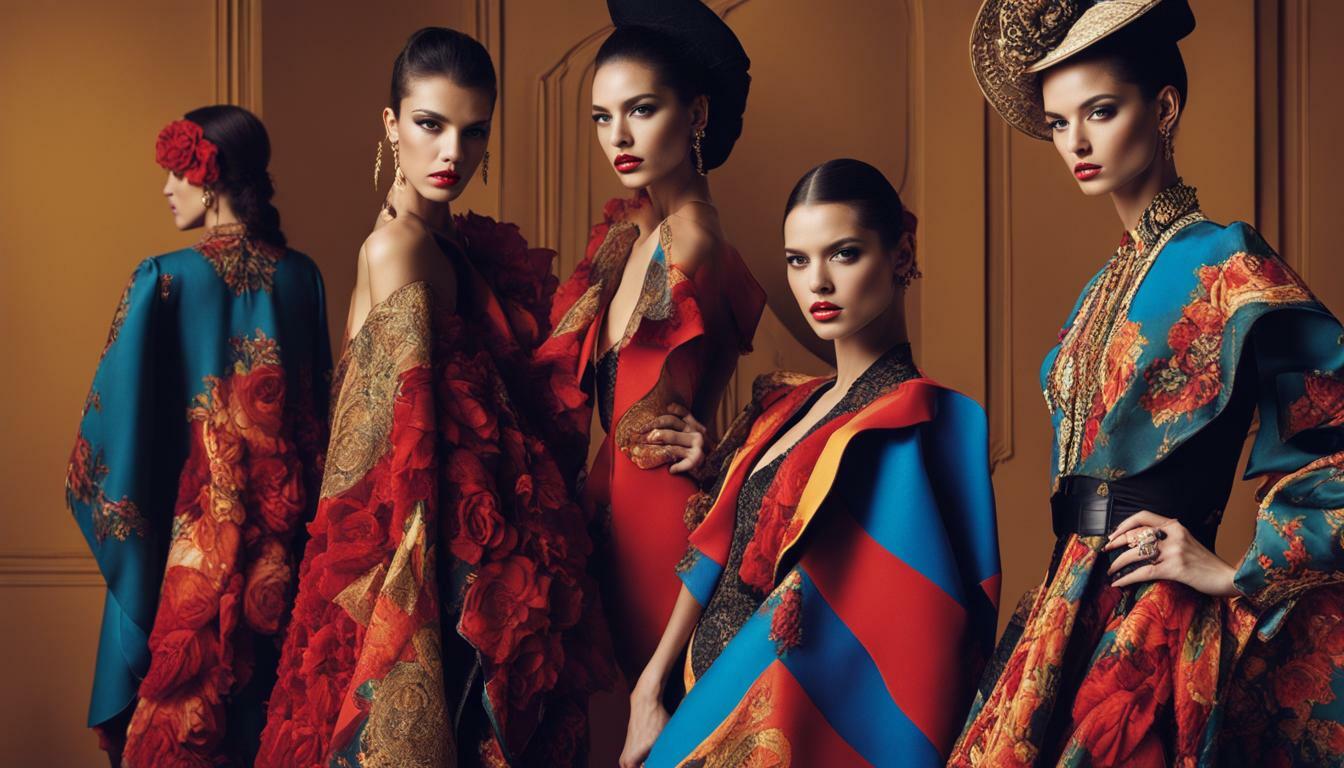 Edit
Edit
Fashion and art in Spain have a rich and intertwined history, with both influencing and inspiring each other over the centuries. Spanish fashion has undergone a complete transformation in the last half-century, adapting to international trends while maintaining its unique cultural identity[1].
Spanish Art’s Influence on Fashion
Spanish artists have significantly impacted fashion design:
- Goya’s bold colors and patterns have inspired many fashion creations[2].
- Velázquez’s use of texture and light has influenced textile design[2].
- Surrealist artist Salvador Dalí collaborated with designer Elsa Schiaparelli, creating iconic pieces like the lobster dress[3].
Fashion’s Impact on Spanish Art
Fashion has also served as a muse for Spanish artists:
- The surrealist movement drew inspiration from Spanish fashion, incorporating its elements into their artwork[2].
- Contemporary artists continue to be inspired by the colors, patterns, and textures of Spanish fashion[2].
Notable Spanish Fashion Designers
Spain has produced numerous influential fashion designers who have made their mark on the global stage:
- Cristóbal Balenciaga, known as “The Master” of haute couture, revolutionized women’s wear with new shapes and silhouettes[4].
- Paco Rabanne and Manolo Blahnik have become internationally recognized names in fashion[2][3].
- Agatha Ruiz de la Prada represents the modern era of Spanish design, incorporating bright colors and fresh ideas into her work[3].
Cultural Influences on Spanish Fashion
Spanish fashion draws inspiration from various cultural elements:
- Flamenco, the traditional dance of Spain, has significantly influenced fashion with its iconic ruffled skirts and tight bodices[2].
- The end of Franco’s dictatorship in 1975 led to a cultural movement called “La Movida,” which encouraged self-expression through fashion, music, and art[3].
Fashion Museums and Events
Spain celebrates its fashion history through various museums and events:
- The Museo del Traje in Madrid houses a collection of nearly 30,000 historical garments and fabrics, showcasing Spanish haute couture alongside international brands[4][6].
- Madrid Fashion Week, currently in its 79th edition, serves as a leading showcase for both established and emerging Spanish designers[4].
Spanish fashion and art continue to evolve, with emerging designers making significant contributions to the country’s cultural landscape[5]. The unique blend of historical influences, cultural traditions, and modern innovation ensures that Spanish fashion remains a vibrant and influential force in the global art and fashion scenes.
Citations
[1] https://artsandculture.google.com/story/fashion-in-spain-contemporary-designers-making-their-mark-museo-del-traje-madrid/8gVBmYCGMyawKA?hl=en [2] https://mavesapparel.com/blogs/spain-fashion-history/spanish-fashion-and-the-arts-an-inspiration [3] https://amigoenergy.com/blog/spanish-cultural-influences-in-fashion/ [4] https://elitetraveler.com/travel/guide-to-spain-fashion-history [5] https://www.inmadespain.com/blogs/entrevista-1/fashion-as-a-form-of-expression-the-relationship-with-art-and-culture [6] https://www.fashionandtextilemuseums.com/spain-portugal/ [7] https://www.spainexpat.com/information/spanish_art_culture [8] https://www.spain.info/en/discover-spain/flamenco-fashion-haute-couture-origin/
